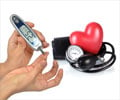- Repaglinide - (https://www.ncbi.nlm.nih.gov/books/NBK559305/ )
- Effect of combination therapy with repaglinide and metformin hydrochloride on glycemic control in Japanese patients with type 2 diabetes mellitus - (https://www.ncbi.nlm.nih.gov/pmc/articles/PMC4025226/ )
- Drug interactions of meglitinide antidiabetics involving CYP enzymes and OATP1B1 transporter - (https://www.ncbi.nlm.nih.gov/pmc/articles/PMC6116761/ )
Information about Repaglinide
Generic Name : RepaglinideUp-to-date prescription details regarding Repaglinide are provided here.
Pronunciation : re-PAG-li-nide
Learn the correct pronunciation of the Repaglinide, understand it's uses, recommended dosages, its indications, how to take, when to take, when not to take, side effects, special precautions, warnings and its and its storage instructions.You will also find a list of the medication's International and Indian brand or trade names, as well as its pricing information. For verification of the information presented on this page or for additional clarifications, it's advisable to consult your doctor.
ICD Code : Y42.3 Therapeutic Classification : Antidiabetics
Trade Names/Brand Names of Repaglinide
India :
International :
Prandin
Why is Repaglinide Prescribed? (Indications)
This medication is a meglitinide antidiabetic, prescribed for type 2 (non-insulin-dependent) diabetes. It decreases the amount of glucose by stimulating the pancreas to release insulin.When should Repaglinide not be taken? (Contraindications)
Contraindicated in patients with diabetic ketoacidosis, with or without coma, type 1 diabetes, co-administration with gemfibrozil, and known hypersensitivity.What is the dosage of Repaglinide?
Adults- PO- The recommended initial dose is 0.5 mg with each meal.How should Repaglinide be taken?
It comes as a tablet to take by mouth, with food.What are the warnings and precautions for Repaglinide?
• Caution should be exercised in patients with history of adrenal, pituitary, liver, or kidney problems, high blood acid levels, high fever, poor nutrition, alcoholism, severe infection, any allergy, who are taking other medications, elderly, children, during pregnancy and breastfeeding.• It may cause dizziness, do not drive a car or operate machinery while taking this medication.
• Avoid alcohol consumption.
• Monitor fasting blood sugar and hemoglobin A1c level regularly while taking this medication.
What are the side effects of Repaglinide?
Metabolic - Decrease in blood sugar.Respiratory - Upper respiratory tract infection and inflammation of sinus/nose/lungs.
Gastrointestinal - Nausea, diarrhea, constipation, vomiting, and indigestion.
Musculoskeletal - Joint pain and back pain.
Other - Headache, tingling, chest pain, urinary tract infection, tooth disorder and allergy.












